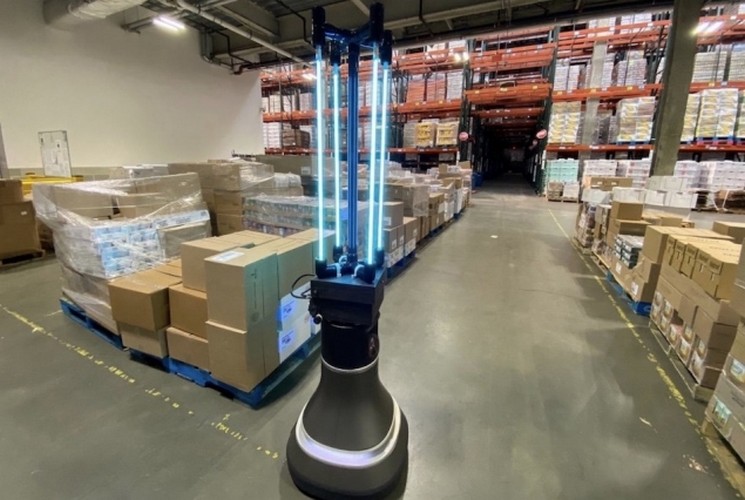
Since the Coronavirus is not showing any signs of stopping any time soon, companies and organizations are relying on robots to maintain the mandatory social distancing and also prevent the disease from spreading. We have seen robots like “Moxi” helping health workers in hospitals and also saw Chennai Police’s “Robot Cop“. Now, an autonomous robot is using UV-C light to disinfect warehouses and keep the workers safe.
The new disinfecting autonomous robot is developed by MIT’s Computer Science and Artificial Intelligence Laboratory (CSAIL) unit in collaboration with the robotic company, Ava Robotics. The organization recently announced the news on its official website along with a video on YouTube (below).
There is already a prototype of the robot working in the Great Boston Food Bank (GBFB) and keeping the warehouse clean for a safe environment for the workers. The team deployed the first robot in the food warehouse as “food banks provide an essential service to our communities, so it is critical to help keep these operations running,”, according to CSAIL Research Analyst, Alyssa Pierson.
How Does It Work?
Now, the robot, initially, needs a human remote operator to set the correct path to roam around the warehouse. After subsequent operations, once the robot understands the pathway, it can operate autonomously.
The robot can go up to speeds of 0.22 mph (~350 m/hour) covering 4000 sq feet of area in just 30 minutes. There are four vertical bars of UV-C light outfitted at a base that is made by Ava Robotics.
The ultraviolet light from these four bars can kill about 90% of the germs, pathogens, and most importantly, Coronavirus particles on surfaces. And as the UV-C light is harmful to humans, the robot waits for the warehouse to close and all the workers to leave before beginning its operation. Quiet intelligent, I must say.
The team is pretty proud of their creation working in the food bank for a Coronavirus-free environment. They will make the necessary changes to the robot by analyzing the result of its operations at the food bank. And they hope that the robot will find use in other areas too, like in airplanes, departmental stores, and schools.
“The insights we received from the work at GBFB has highlighted several algorithmic challenges. We plan to tackle these in order to extend the scope of autonomous UV disinfection in complex spaces, including dorms, schools, airplanes, and grocery stores.”, said Daniela Rus, the Project Lead and the Director of CSAIL.